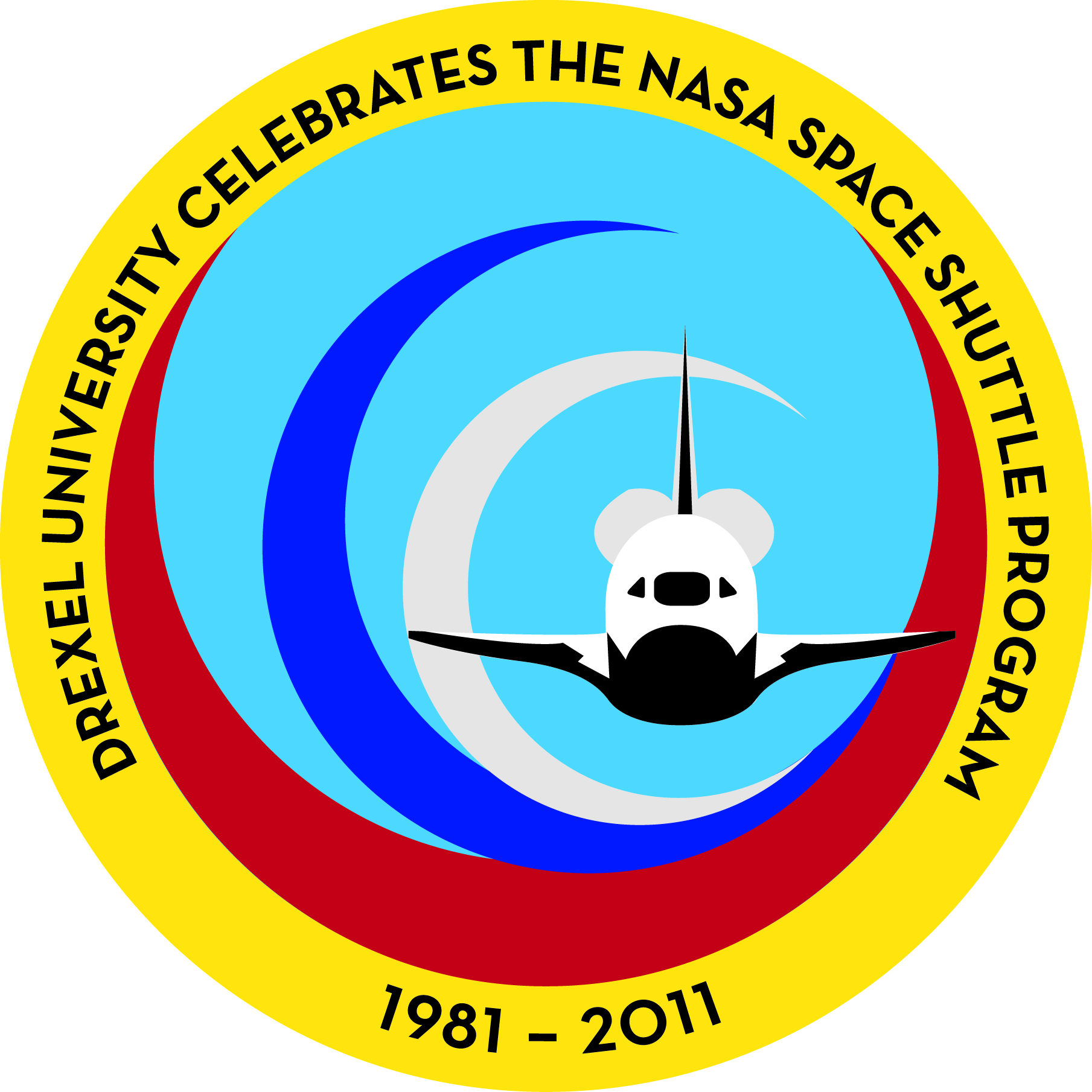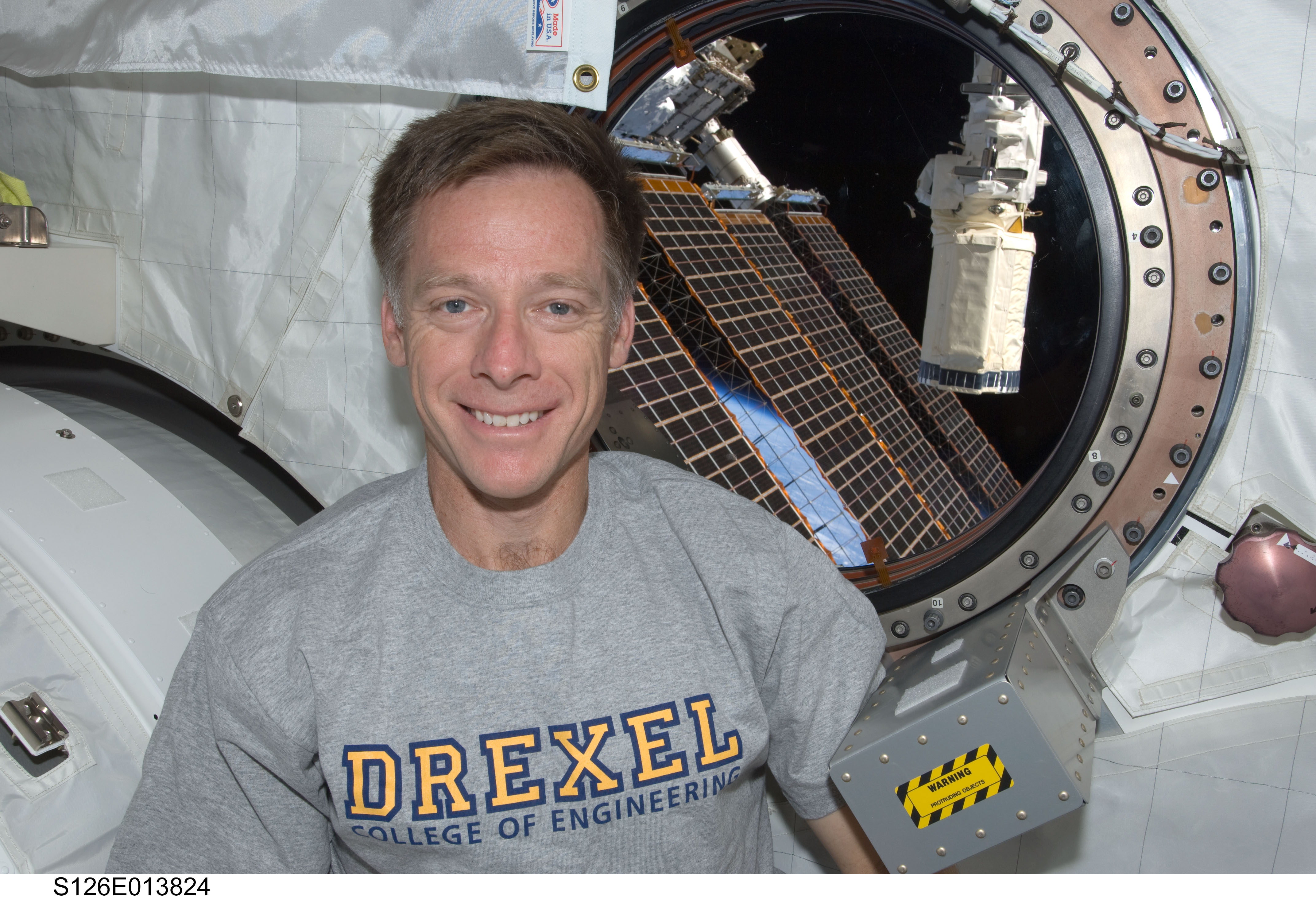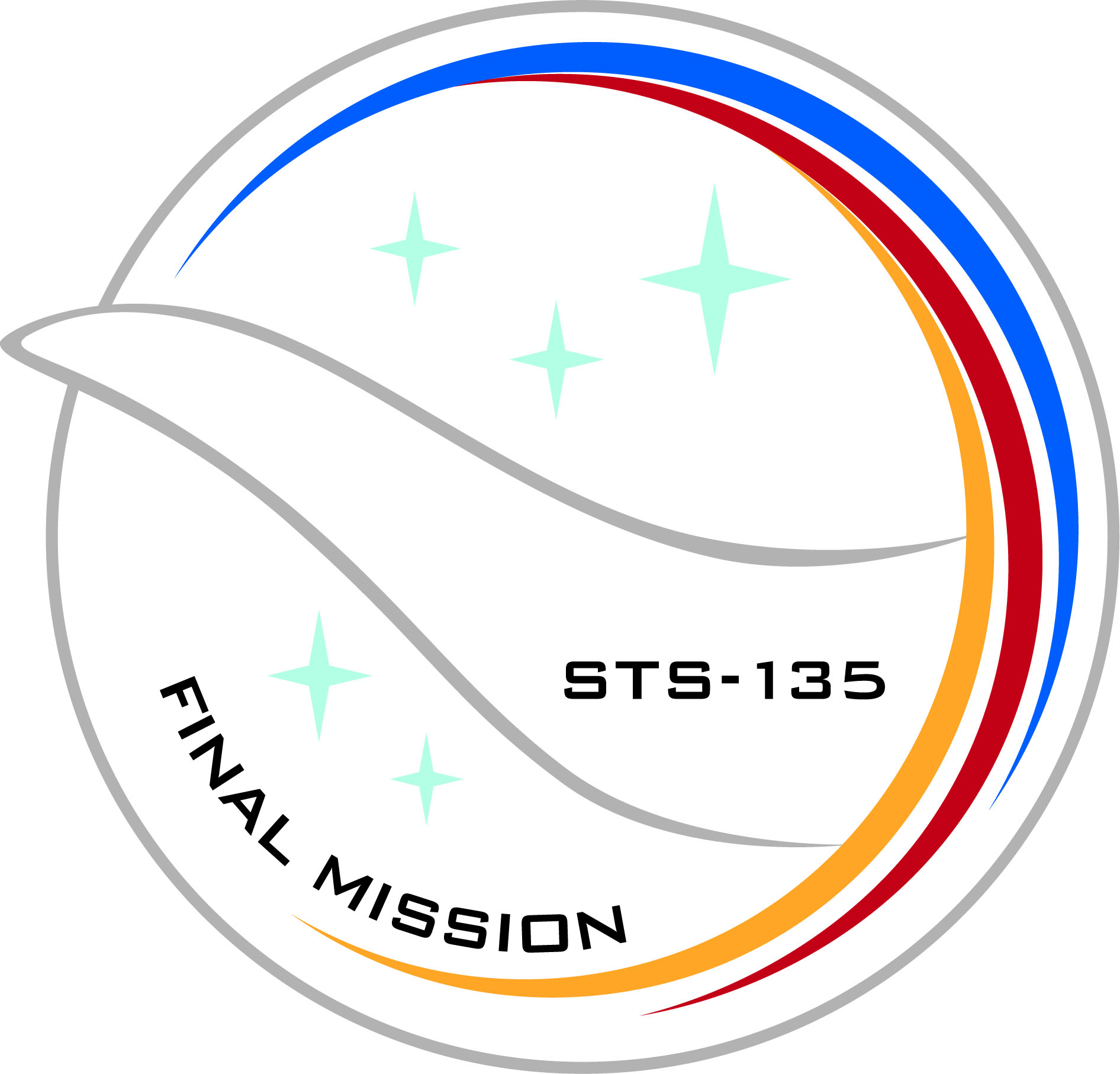
BY MEREDITH KLEIBER If you read the news on a regular basis, you’ve no doubt heard that the NASA Space Shuttle program will cease to exist after today’s scheduled launch of the Space Shuttle Atlantis. What you may not know is that Philadelphia is playing a significant role in this auspicious occasion. First of all, the commander of the Atlantis on its final flight is none other than Drexel alum Chris Ferguson (class of 1984). Secondly, Ferguson asked the graphic design department to design the mission patches for the flight. Mission patches are a big deal in astronaut circles and each mission gets its own custom-designed patch, a tradition that stretches back to 1965. Recently, Phawker spoke with the team from Drexel’s graphic and design school — students Jennifer Choy and Jeremy Bloom, and Don Haring Jr., their professor — that created the mission patches for the space shuttle’s final mission.
PHAWKER: Tell us about the process of creating the mission patches. I know that you had a two-week time frame to produce the designs.
PROFESSOR HARING: I wish I remember where I heard this advice a long time ago, but in essence I was told that a project only takes as long as the deadline – meaning if you have two weeks to do it, you get it done in two weeks. To get it done, we asked a group of students that we thought would be interested in working on the project and would have the time to do it. They all said yes and did it on top of their normal school and work schedules. My job was simply to get them started and help coordinate things. I didn’t art direct any of the solutions, just gave some tips to make each one better. We first researched mission patches and there’s a rich history of them going back to the original manned space flights. The patch helps symbolize the mission. After looking at what came before, we talked about how to design something in the tradition but give them something new. The students wanted to keep it simple since many of the prior ones were very complex and literal. Each student put together two concepts and we forwarded those to Chris. He loved two of them – designs by seniors Jen Choy and Jeremy Bloom, so Jen and Jeremy went back and made final revisions. In the end, those designs were not chosen as the official patch, but Chris liked them so much he wanted versions that he could take on the flight. The official design was created by another astronauts wife, and Chris joked they he only got one vote, and he “was ONLY the Shuttle Commander!” We gave him printed versions of the patches and also surprised him with actual embroidered patch versions since we thought that would fun to seem them as real patches, as they were designed to be.
PHAWKER: Tell us about working with Commander Ferguson.
PROFESSOR HARING: I knew of Commander Ferguson since he is one of the more famous Drexel graduates, but I had not yet met him. He stopped by the Graphic Design floor after the designs had been selected and spent some time dropping in on classes. I was incredibly impressed. He seems like a genuinely nice guy, very personable. I was going to say “down-to-earth”, then realized the irony! But it was always in my mind, the 10-year-old inside of me, that this guy FLIES AROUND IN SPACESHIPS! So that’s neat to be in the presence of someone that has done extraordinary things. When he stopped in, he talked a bit about the mission, and answered questions about the Space Program. We found it enlightening considering the fact that our manned space missions are ending. We’ll be relying on the Russians for trips to Space Station, and the Chinese are really working hard to perfect manned space flight. Chris pointed out that the United States has been on top for so long regarding space exploration, but there’s nothing written that keeps us there. On top of that, for his generation and mine, space exploration fueled the interest of so many kids to pursue science and technology careers. We left things on this note: he thought that NASA is doing all kinds of exciting inspirational projects, but they don’t always communicate the importance of such things widely and as effectively as possible. That’s our job as graphic designers, to communicate messages, and everyone at Drexel was so excited to play a small role in helping NASA. We’re really excited for the flight and wish them all the best. It will be an historic occasion. Did I mention that NASA is putting people in space, in a SPACESHIP?! Too cool.
PHAWKER: How did you conceptualize the designs for your patches, or what was the underlying inspiration behind the designs?
JEREMY BLOOM: I began the process by looking at past designs for the NASA Patches, most of which were non abstract and straight forward. I started playing with different shapes associated with the shuttle and its actions. The tunneling appearance of the wave came out of videos I watched about flight. The way the air collapses behind jet engines was inspiration for the wave abstraction. From there it was a matter of trying different sizes and colors of the shapes to reach the final design.
JEN CHOY: I was inspired by the idea of motion — the powerful thrust of a launching shuttle at blast-off, the gracefulness of an astronaut floating in space. My focus was on portraying the shape and motion of the space shuttle as graceful and elegant but also powerful. The patch was later named the Spaceswan [pictured, above left], which I think is a fitting title.
PHAWKER: Since this is the final flight of the Space Shuttle program, your patches will have historic significance. Can you explain the essential function of the mission patch to NASA as a whole?
 JEREMY BLOOM: I know that the mission patches were first introduced to NASA in 1965 and were basically similar to the military’s use of patches to denote their wartime services. Personally, I see the usage of patches as an easily identifiable connection to that specific space shuttle launch. Rather than it being a number, the patch evokes a connection on a more personal level to that specific mission.
JEREMY BLOOM: I know that the mission patches were first introduced to NASA in 1965 and were basically similar to the military’s use of patches to denote their wartime services. Personally, I see the usage of patches as an easily identifiable connection to that specific space shuttle launch. Rather than it being a number, the patch evokes a connection on a more personal level to that specific mission.
JEN CHOY: The essential function of our patches is to commemorate and emphasize the importance of not only this historic final mission, but also the NASA Space Shuttle Program as a whole. They also represent Drexel’s support and participation in this significant occasion.
PHAWKER: Having your design work chosen to be the mission patch for the final space shuttle flight, as well as having it up in space for an indefinite length of time, is a pretty epic accomplishment. How did you feel when you found out that your patches were chosen?
JEREMY BLOOM: I was pretty shocked. It was a nice surprise that not only did NASA liked our patches, but mine especially. It’s truly an honor.
JEN CHOY: I was ecstatic and surprised. I still can’t believe that it was chosen and that it is actually going up in space.
